Editor’s note: The slideshow below chronicles the creation of Laleh Mehran and Chris Coleman’s “Unclaimed,” part of the Biennial of the Americas’ “Now? Now!” exhibit at the Museum of Contemporary Art Denver.
For Colorado fans of new media art installations, the works of Christopher Coleman and Laleh Mehran are often out of reach.
That’s not to say these works are impenetrable or hard to figure. It’s just that, much of the time, the two University of Denver art professors are exhibiting somewhere else — Dubai, say, or Taiwan.
That drought lifts with the July 14 opening of Denver’s Biennial of the Americas, a festival of arts and ideas from two continents. Along with 60-plus artists from nine countries, the two world-renowned artists from DU were invited to contribute a piece to “Now? Now!,” the biennial’s central exhibit at the Museum of Contemporary Art Denver, which runs through Aug. 30.
The Coleman-Mehran submission, titled “Unclaimed,” explores the air above our heads, the space between the roofs of our buildings and the zone that a nation claims as its air space. It’s where birds, kites and even drones fly and where we expel smoke and steam. Just as important for Biennial audiences, the air in Denver today may well be the air in Montevideo next week.
“Its space that nobody has domain over. Everybody has the right to use it, but nobody has the right to control it,” Coleman explains. “We were interested in the problems of the commons, something that is owned by everyone.”
“It’s not American air,” Mehran adds. “It has this amazing ability to go around the world. It’s not stagnant or stationary. Nobody can plant a flag on it.”
To communicate this point, “Unclaimed” utilizes a full room at the MCA. The ceiling is lined with 200 tiny fans covered by a thin sheet of plastic. When the fans are on, the cover undulates with the air flow. Underneath this air system, Coleman and Mehran have created an expansive cityscape, with roughly 200 buildings generated by a 3-D printer. A light system shows the city through a 24-hour cycle, with a full day completed every few hours.
Viewers are invited not just to examine the air flow, but to contribute to it. If they lean over the city and blow, they can get a sense for how air circulates and of where it goes. When several people are blowing at once, it’s easy to see how human behavior in one locale can affect the air downwind.
Coleman and Mehran consider the work both a technical and an aesthetic accomplishment — one hatched, in part, at the School of Art and Art History’s Shwayder Art Building, where the piece was assembled and tested. Engineering the installation took months of research. And construction of the piece began the minute classes ended in late spring, with students enlisted for help whenever possible.
Special care was taken to be sure that “Unclaimed” provoked thought and made a point. Ultimately, Mehran says, “Unclaimed” reminds us that “we have a serious responsibility to the air that comes back to us, like a boomerang.”

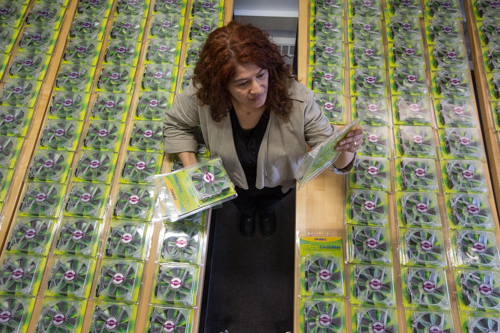



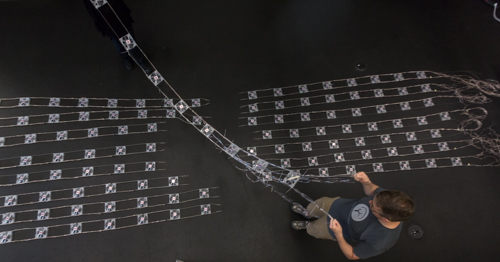
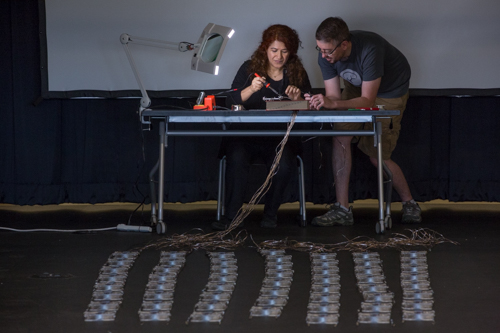
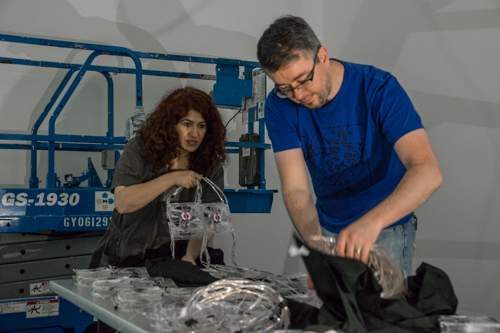
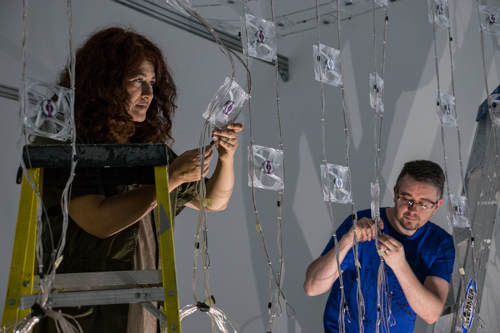
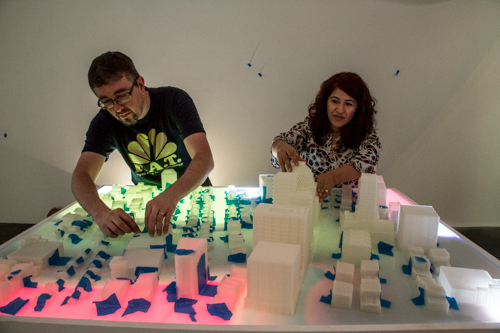
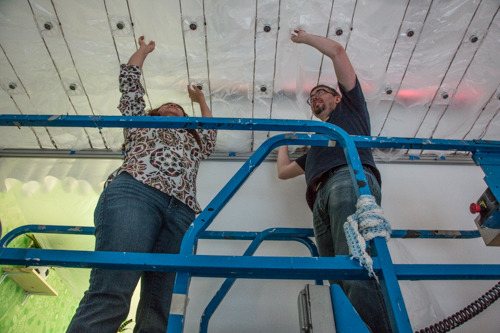
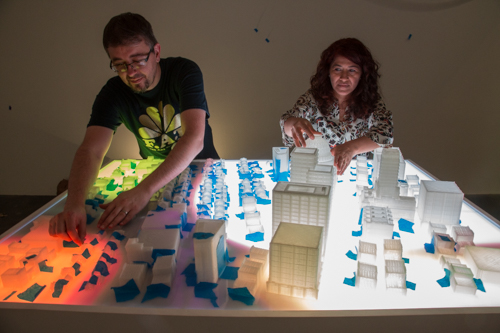
2 Comments